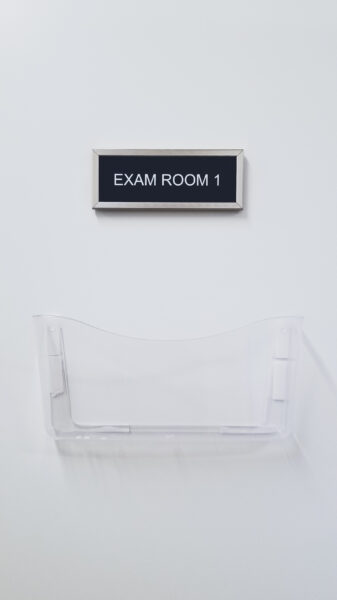“I like to observe my patient. First, I look at the forehead and eyebrows, noting the position of the eyebrows relative to the superior bony or orbital rim. Different people have different tastes as to where the eyebrows look best. The patient’s opinion of where he or she wants their eyebrows to be is very important to me.”

When assessing the forehead, Dr. McKinstry notes if the hairline is high or low. Next, she looks at the wrinkles, the frown lines between the eyebrows, and the horizontal forehead creases.
Then, she looks at the upper eyelids. She wants to see where the eyelashes lie relative to the pupil and cornea. The ideal upper eyelid margin is anywhere from the top of the cornea, or colored portion of the eye to 2mm below. She notes if the eyelid covers the pupil, blocking vision. She also assesses if there is excess upper eyelid skin or fat. She asks the patient to close his or her eyes to see if the eyes close completely.
Next, Dr. McKinstry looks at the lower eyelids. The ideal lower eyelid edge rests at the lower border of the cornea and colored iris. She tests the elasticity and tension in each lower eyelid. It should have good tension and snap back into position after gentle distraction.
The doctor looks for possible lower eyelid problems. Sometimes, the margin or edge of the eyelid can be displaced downward so it rests 1mm or several millimeters below the cornea leaving a white exposed area or “scleral show”. This can follow previous lower eyelid surgery, either occurring soon after surgery if too much skin was excised, or years later when the eye loosens with age and the eyelid level drops down. This can result in drying of the surface of the lower eye because the eyelid margin can no longer hold a tear film near the cornea. The patient can then be left with burning, discomfort and tearing.
Also with aging, the eyelid support structures may become weak, allowing the eyelid to turn in so that the eyelashes scratch on the eyeball (a term called entropion) or turned outward away from the eyeball leaving a pink-red edge (called ectropion).
Dr. McKinstry also checks for eyelid puffiness. The eyelids puff out when the normal orbital fat cushioning the eye bulges forward. Sometimes because the membrane, or septrum, that usually holds it back, has become weak. More often, the eyelid appears to bulge forward because the adjacent upper cheek fat has thinned. Dr. McKinstry will note the position of the cheek fat. The cheek fat may have fallen creating a hollow between the lower eyelid and the cheek. Sometimes tissue bunches over the malar bone, or cheek bone, as the fat descends. Next, comes the skin. Is there excess skin in the lower eyelids or just fine wrinkling?
Dr. McKinstry will examine the skin of the entire face. She will note if there are growths such as keratoses or moles. She looks for evidence of sun damage and changes in pigmentation. She looks for telangiectasias, or spider veins. She notes the wrinkles and skin texture.
Dr. McKinstry always examines the eyes. She will check your vision, the health of the cornea, and test for dry eye. The purpose of your eyelids is to protect and moisturize the surface of the eye. Dr. McKinstry is a board certified ophthalmologist. Her priority is to have eyelids that function well to maximize vision, as well as have eyelids that look good.
Once she has made her assessment, Dr. McKinstry asks the patient about his or her desires and goals, what bothers them the most, and what they would like changed. She then discusses with the patient what she sees, what can be changed, and what results can realistically be expected from surgery.
